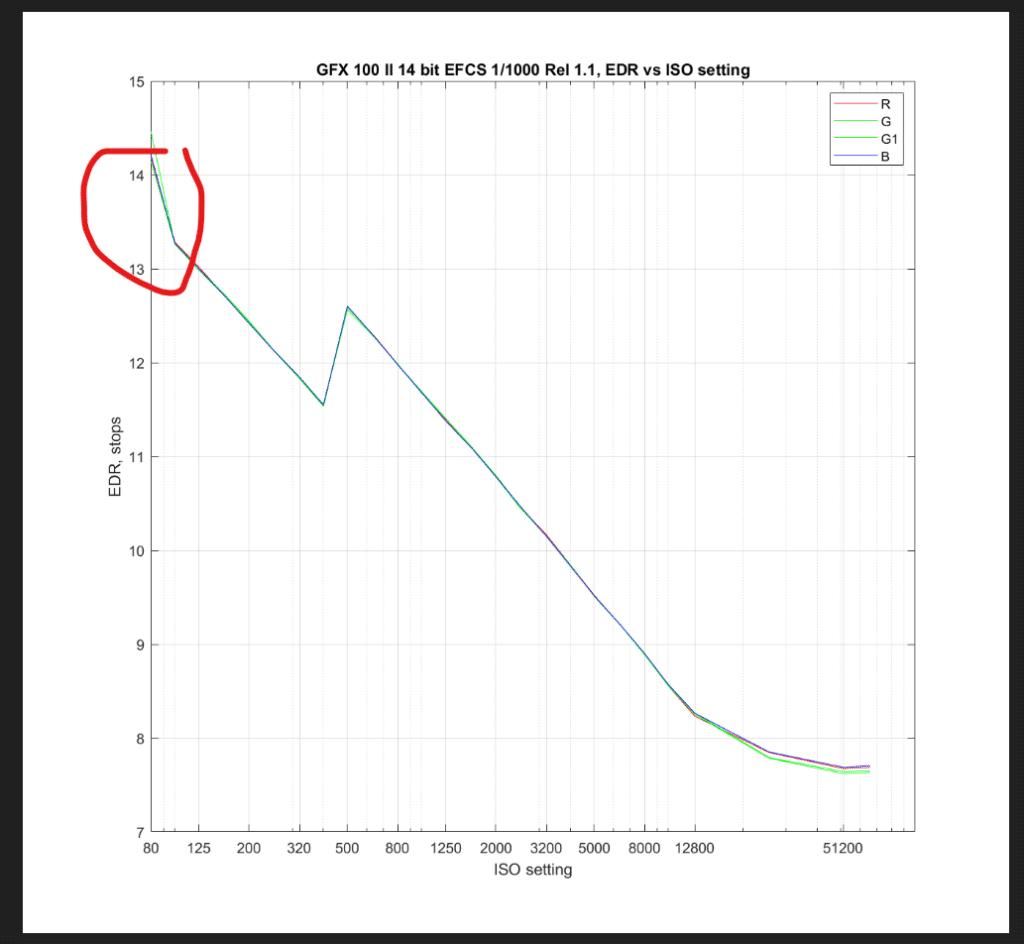This is the eleventh post in a series of tests of the Fujifilm GFX 100, Mark II. You can find all the posts in this series by going to the Categories pane in the right hand panel and clicking on “GFX 100 II”.
Fujifilm has stated that the GFX 100 II has a new sensor. But except for the ISO 80 availability and performance there, the GFX 100 II sensor looks a lot like the old sensor. Meet the new boss, same as the old boss? Maybe. Or maybe it’s that — echoes of Bill Clinton — it’s all a matter of what the definition of “sensor” is. I define the sensor as the silicon. Fujifilm may be defining it as that plus the color filter array, the microlenses, the hot mirror, and the rest of the sensor stack, and saying that if you change any one of those things it’s a new sensor. This is a bit like saying if you paint your white car red, it’s a new car.
I will do a full set of photon transfer curves in the next couple of days, and we’ll know a lot more then, but I’ve developed the beginnings of a theory of how Fujifilm could have added ISO 80 capability to the old Sony IMX 461 sensor if you use my definition of “sensor”. There are some guesses and assumptions here, since I don’t know much about the inner workings of the IMX 461.
I’m assuming that the sensor know nothing about ISO, but that it allows the conversion gain and the gain of the programmable gain amplifiers to be selected, the former in a binary fashion. I’m also assuming that the sensor allows the conversion gain to be set low enough that the nonlinearities of voltage vs number of photons counted are evident.
Here’s what I think happened. With the GFX 100 and GFX 100S, the Fujifilm did the standard thing and set the programmable gain amplifier for base ISO 100 so that there would be little nonlinearity before the analog to digital converters attained full scale. In the GFX 100 II, they picked that gain for ISO 100 also. But for ISO 80, they chose a gain a third of a stop below the ISO 100 gain, letting the ADC digitize nonlinearities that they had rejected in the earlier cameras. If this is true, full scale at ISO 80 will be a bit below one third stop higher than full scale at ISO 100.
Assuming this is what’s happening, what’s wrong with this. There are two answers: not much, and nothing, depending on how the raw developers treat the ISO 80 images. The not much case occurs when the raw developers assume that the raw counts vs photon relationship is linear. In that case, there can be highlight tint shifts near the clipping point. These will vary as the lighting spectrum changes. The nothing case will happen if the raw developers understand the camera’s nonlinearity at base ISO, and compensate for that.
One problem: my theory does not explain the kink in the EDR curves.
I’ll be doing more testing to try and validate — or not — this theory.

Leave a Reply